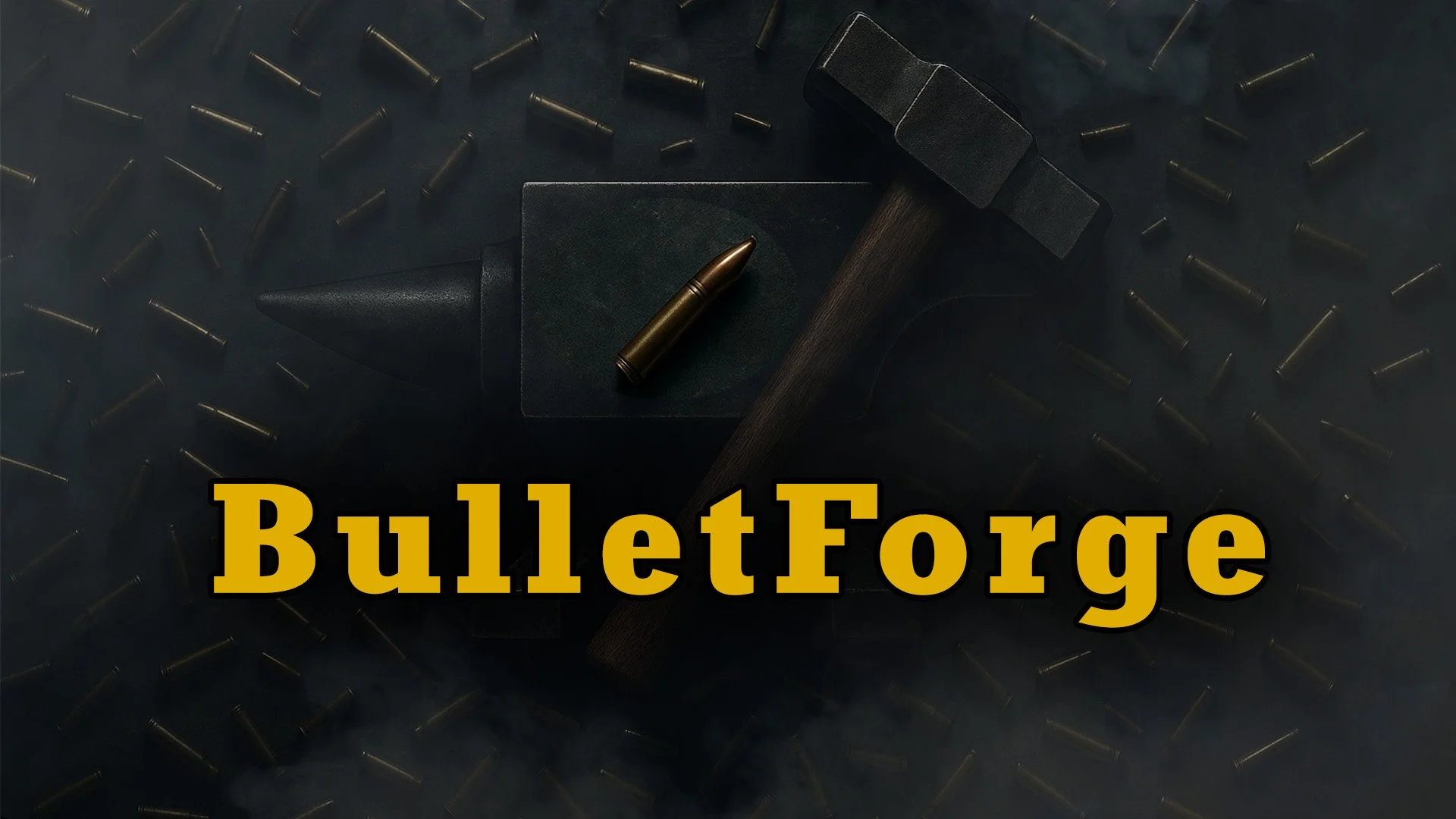Bullet Forge Documentation
Install
Use the Epic games launcher to install the plugin into your engine
(Optional) Copy the BulletForge Plugin folder into your project ‘plugins’ folder
Plugin Developer Settings
Access the developer settings by going into your project settings and scrolling down to the plugins section. Click on Bullet Forge.
Max Traces Per Tick - Defines the max traces the system will attempt per tick
Air Density - Defines the air density for trace calculations
Default Gravity - Defines the gravity for trace calculations
Base Penetration Modifier - this value is used to scale the penetration power of bullets. It allows for dynamic adjustment of penetration behavior based on gameplay needs. A value of 1.0 means no modification, while values greater than 1.0 will increase penetration power.
Base Ricochet Angle - Bullet Forge will attempt to ricochet if the incidence angle exceeds this value.
Ricochet Angle Factor Modifier - This value multiplies the AngleFactor used in ricochet calculations. It allows for dynamic adjustment of ricochet behavior based on gameplay needs. A value of 1.0 means no modification, while values greater than 1.0 will increase the chance of ricochets at shallower angles.
Default Material Density - This value is used when no specific material density is provided by the hit actor.
Material Hardness Divisor - Used to normalize material hardness values for penetration calculations. Default value is set to 7850 kg/m³, which is the density of steel. Adjust this value based on the materials used in your game for more accurate penetration effects. Higher values will make penetration more difficult, while lower values will make it easier.
Material Hardness Modifier - Value will be added to the calculated material hardness. This allows for fine-tuning of penetration effects based on gameplay needs. A positive value will increase the effective hardness, making penetration more difficult, while a negative value will decrease it.
Default Material Thickness - This value is used when no specific material thickness is provided by the hit actor. It serves as a fallback value for penetration calculations.
Material Thickness Modifier - This value is used to adjust the thickness of materials based on gameplay needs. It can be used to make materials thicker or thinner without changing the actual material properties. This will be added to the calculated material thickness during penetration calculations.
Setup a bullet asset
Create a data asset with the class
BallisticSettingsFill out the data as needed
Setup the weapon component
Create a blueprint class from the type:
BulletForgeWeaponComponentOpen the blueprint and override the function:
SpawnImpactEffectsImplement any logic needed for creating impact effects on surfaces
One way to do this is to assign physical materials to your in game objects and utilize gameplay tags to determine what sound and/or effect to play
Setup your weapon class
Add the new actor component we created above to your weapon actor blueprint
Implement the
SpawnWeaponEffectsevent and add your logic for playing weapon sounds and muzzle effectsImplement the
SpawnShellEffectsevent and add your logic for playing any ejection shell effects needed for the weaponAdd a variable of type
BallisticSettingsand assign it to the bullet we created aboveLocate your shooting or firing logic and add drag the component into the graph
Drag off the component and find the function
FireBulletInput the required values
Muzzle Transform - Get the location of the muzzle or where the weapon is aiming
Settings - Input the
BallisticSettingsvariable we made aboveOwning Actor - Set this to the owner of the weapon, typically a pawn. Easiest way to do that is use the
GetOwnerUnreal Engine functionIgnored Actors - Add any actors (such as weapon attachments) to an array and plug the array in
Show Debug - If you want debug traces to show on the client
Debug Duration - How long those debug traces stay on screen
The
FireBulletfunction will automatically call the server function and client events when triggered from the client
Setup reactive actors
Use and actor that will need to react to bullet hits, penetrations, ricochets or flybys
Typically this can be the character pawn or some kind of armor actor
Add the component
BulletForgeReactiveto the blueprintImplement the
OnPenetrationEvent,OnRicochetEvent,OnHitEvent, orOnFlyByEventas neededGo to class settings and implement the
BulletForgeInterfaceImplement the
GetReactiveComponentinterface function and drag theBulletForgeReactivecomponent into the return value(optionally) Implement other interface functions to customize the behavior of traces

